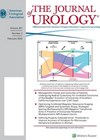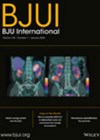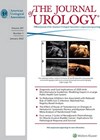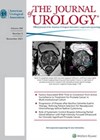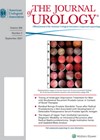
Journal Reviews
Upper tract urothelial carcinoma following cystectomy
Metachronous upper tract urothelial cancer (UTUC) is encountered in about 5% of patients after radical cystectomy (RC) with a median time to diagnosis of 24-36 months after RC, and most are asymptomatic and detected by surveillance protocols. In this multivariate...
Is Retzius-sparing prostatectomy the way forward?
Urinary incontinence is a common complication of conventional robot-assisted radical prostatectomy (RARP). Retzius-sparing RARP is performed through the pouch of Douglas to avoid destroying the pelvic fascia and the prostate’s anatomical structures. It has shown early favourable results in terms...
Is robotic pyeloplasty in the under-ones as good as open repair?
Pelviureteric junction obstruction (PUJO) is a common cause of paediatric hydronephrosis. Indications for intervention include reduced renal function (<40%), symptoms (urinary tract infection or pain) and increasing dilatation. Although the Anderson-Hynes open pyeloplasty (OP) has long been the gold standard...
BCG after TURBT – does timing matter?
Intravesical bacille Calmette–Guerin (BCG) therapy continues to be widely used for patients with intermediate / high-risk non-muscle invasive bladder cancer (NMIBC). In this article, the researchers identified the lack of sufficient evidence with regards to timing of BCG after transurethral...
Loop-tail stents in reducing stent related symptoms – the search continues
Insertion of double J (DJ) stents is one of the most commonly performed procedures in urology. One of its major drawbacks is stent related symptoms (SRS) which has generated a lot of research in drugs, stent design and materials. One...
Refining management of non-visible haematuria
The optimal evaluation of non-visible haematuria (NVH) continues to be debated, with competing interests of avoidance underdiagnosis and the harms of over-testing. Current National Institute for Health & Care Excellent (NICE) guidance recommends referral for patients ≥60 years with NVH....
The urinary microbiome in IC/BPS: more complicated than we imagined
The concluding statement of this short review states, “the study of the urinary microbiome and its impact on urological disease, including IC/BPS, is in its infancy.” A lot has been said on this subject in recent years, but this, in...
A tale of two cities – hypospadias outcomes
As urologists, it is important to know our results. In terms of hypospadias surgery, which is commonly undertaken after the age of one year in the UK, long-term follow-up is required to fully acquire this knowledge. Long-term urinary outcomes and...
Factors and time to conversion from prostate cancer active surveillance to treatment
Active surveillance is the standard of care for men with low-risk and selected men with favourable intermediate risk prostate cancer. The aim is to reduce the morbidity and mortality of overtreatment of non-clinically significant prostate cancer. A significant proportion progress...
Time for tea
Kidney stone disease can be related to genetic, biochemical, and dietary factors. Much has been said about the link between tea and coffee consumption and risks of urinary stone formation. This is a systematic review using the PRISM statement with...
Fear and frustration among women with recurrent UTIs
The risk of a women developing a urinary tract infection in her lifetime is over 50%, approximately 25% of which become recurrent (rUTIs). This study examined the viewpoints of women with rUTIs through six focus groups at a tertiary centre...
Standard versus expanded cultures to diagnose UTIs in women
Clinicians are well aware of the limitations of the so-called Kass criteria applied to standard urine culture (SUC) techniques as well as the limitations of empiric antibiotic prescribing for symptoms that are known to overlap with chronic conditions such as...

